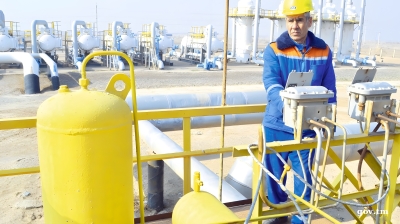The European Bank for Reconstruction and Development (EBRD) has revised its projection for growth across the regions in which it operates for 2023, lowering it to 2.2%, a small downward adjustment from the previous forecast of 2.3% in February.
In 2024 growth in Emerging Europe, Central Asia and the southern and eastern Mediterranean (SEMED) is expected to pick up pace to 3.4%. This is an upward revision from the February prediction of 3.3%, as inflationary pressures gradually diminish.
Growth has slowed dramatically in Emerging Europe and Central Asia since the 7.2% recorded in 2021 during the region’s rebound from the coronavirus (COVID-19) pandemic. This was followed by a decline to 3.3% in 2022, as Russia’s invasion of Ukraine and related sanctions led to lower output in several countries and and hiked inflation. In the latter half of the year there were two consecutive quarters of negative quarter-on-quarter growth.
Several factors contributed to the downward revision for 2023. Inflation remains a drag on growth, along with sluggish growth in advanced economies, and stricter financing conditions in Central Europe and the Baltic states.
There are also factors such as the economic repercussions of the earthquakes that occurred in February, anticipated credit tightening later in the year in Turkey and postponed reforms in the SEMED region.
Persistent inflation
One of the primary factors driving the current recession is the high inflation rates experienced in over three-quarters of the EBRD economies, according to the development bank. Although there has been a slight moderation in inflation due to a decrease in energy prices, the average inflation rate across the EBRD regions still stood at 14.3% in March.
“Inflation is eroding real wages, particularly in Central Europe, which is translating into lower purchasing power, lower consumption and therefore weighing down on growth. At this point, inflation is not only driven by fallout from the war as the core inflation seems quite persistent,” Beata Javorcik, the EBRD’s chief economist, told bne IntelliNews in an interview in Samarkand on May 15.
Rising inflation has a psychological impact on households in the region. “In Eastern Europe anybody over 50 remembers the hyperinflation of the 1990s. Therefore, people tend to change their expectations faster and they tend to be more suspect of promises being made by central banks. Moreover central banks in the region are less experienced at communicating their policies to the public,” explains Javorcik.
The EBRD also cites preliminary findings from the latest Life in Transition Survey, a representative household survey conducted by the bank in collaboration with the World Bank, indicating that 55% of households in the EBRD regions are unable to save as they rely on their monthly income to meet their expenses. 10% of respondents report accumulating debts.
The majority of households in the EBRD regions have limited financial reserves, with 59% stating that they are unable to cover their basic expenses for more than a month using their savings.
Central Asia forecast lifted
Despite the increasingly gloomy projection for the region as a hole, the growth outlook for Central Asia remains robust, with a projected growth rate of 5.2% in 2023 (revised upwards from the February estimate) and 5.4% in 2024.
Growth this year is expected to be particularly fast in Tajikistan, Mongolia and Kyrgyzstan, with Uzbekistan and Turkmenistan not far behind.
“Central Asia has been very resilient so far,” said Javorcik, listing several factors driving the growth in the region. “First, some of the countries are commodities exporters, and demand for non-Russian energy has been on the rise.
“The Central Asian economies benefited from an influx of people and capital from Russia as a result of the war and mobilisation. Many of these Russians were educated people, and many relocated their companies to Central Asia and brought capital with them. In the first three months after the war started, 2,000 companies with Russian capital were registered in Kazakhstan,” added the economist.
“Thirdly, direct exports from Western Europe to Russia went down by more than half, and some of those exports are now being intermediated by Central Asian countries, especially Kazakhstan, Kyrgyzstan and Armenia. While the intermediated exports by value are a small share of the direct trade, for some of the smaller countries the volume of these is equivalent to a few percentage points of GDP.”
Mongolia, meanwhile, is benefiting from expanded mining production and the reopening of trade with China.
Pockets of strong growth
The EBRD also adjusted upwards its forecasts for 2023 for the economies of the Southeastern European Union — Bulgaria, Greece and Romania. This upward revision is supported by the positive outlook for Eurozone accession, which is expected to enhance investor confidence in Bulgaria. Romania is experiencing higher levels of public investment. The region is expected to grow by 2.3% in 2023 and 3% in 2024.
In the Western Balkans, EBRD’s forecasts remain unchanged from February, except for an upward revision for Kosovo in 2023. Output expansion is forecasted to reach 2.2% in 2023. However, this growth faces challenges from inflationary pressures and a less optimistic outlook for advanced economies in Europe. Nevertheless, a recovery is expected, with growth picking up to 3.4% in 2024.
Deceleration in CEE and Ukraine
Growth in Central Europe and the Baltic states is anticipated to be considerably modest, with a projected increase of just 0.5% in 2023. This revision downwards from the February estimate is attributed to slower-than-anticipated growth in advanced economies and persistent core inflation.
Although the region demonstrated resilience in 2022, the post-COVID recovery has largely lost momentum, resulting in recent negative quarter-on-quarter growth. This year, contractions are forecast in Czechia and Estonia, and flat growth in Latvia and Lithuania. However, growth is expected to pick up to 2.9% in 2024.
Similarly, in Eastern Europe and the Caucasus (excluding Ukraine), growth is forecasted to decelerate as the extraordinary factors that stimulated economic activity in 2022 offer limited additional stimulus. The region is projected to grow by 1.9% in 2023 and 3.3% in 2024.
Ukraine's economy is expected to experience modest growth, with an estimated increase of 1% in 2023 and 3% in 2024, as businesses adapt to the war.
Growth in Turkey is anticipated to slow down to 2.5% in 2023 and 3% in 2024. The downward revision for 2023 is influenced by the impact of the earthquakes that occurred in February 2023, as well as the expected tightening of credit conditions in the latter half of the year.
The SEMED region is projected to grow by 3.6% in 2023 and 4.4% in 2024. The downward revisions for 2023 reflect delays in implementing reforms, spill-overs from weak growth in advanced European economies, and increased fiscal and external vulnerabilities in Egypt.
News

Northern Afghanistan hit by M6.3 tremor
A powerful earthquake has struck northern Afghanistan, leaving at least four people dead and scores injured, according to local officials. The numbers are expected to rise significantly.

Kerala becomes India’s first state to declare freedom from extreme poverty
The state's Chief Minister described the moment as the dawn of a new era for Kerala, attributing the achievement to a sustained four-year effort under the Extreme Poverty Alleviation Project.

Tensions rise in Serbia as protesters clash outside parliament
The confrontation followed a massive anti-government demonstration in Novi Sad on November 1.

Russia launches Khabarovsk nuclear submarine designed to deploy nuclear-capable Poseidon drones
Russia has launched a new strategic nuclear submarine, the Khabarovsk, which is capable of carrying a dozen of the Kremlin’s recently unveiled nuclear-powered Poseidon torpedo—a next-generation weapons system that Putin called "unstoppable."



